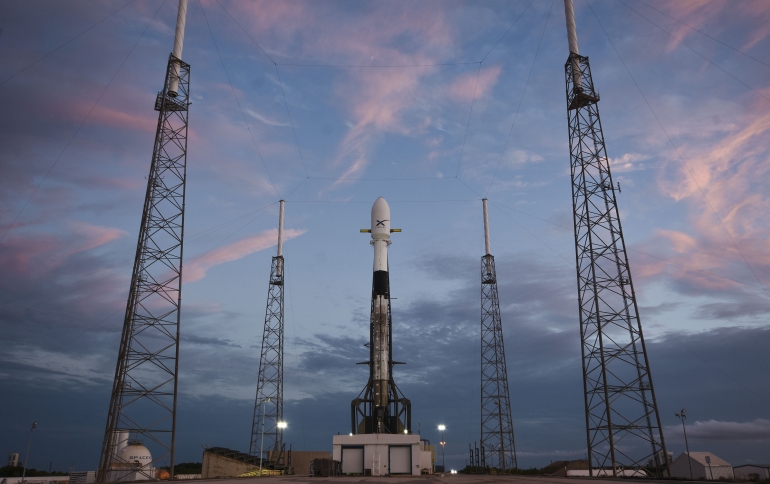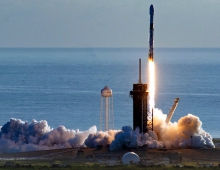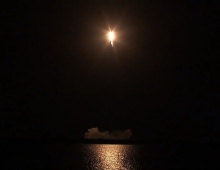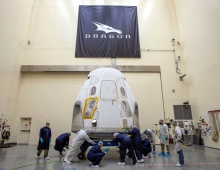
SpaceX To Launch 60 Starlink Satellites For Space Internet Service
SpaceX is targeting Wednesday, May 15 for the launch of 60 Starlink satellites from Space Launch Complex 40 (SLC-40) at Cape Canaveral Air Force Station, Florida.
SpaceX’s Starlink is a next-generation satellite network capable of connecting the globe, especially reaching those who are not yet connected, with broadband internet services.
The launch window opens at 10:30 p.m. EDT on May 15, or 2:30 UTC on May 16, and closes at 12:00 a.m. on May 16, or 4:00 UTC. A backup launch window opens on Thursday, May 16 at 10:30 p.m. EDT, or 2:30 UTC on May 17, and closes at 12:00 a.m. on May 17, or 4:00 UTC.
Falcon 9’s first stage for this mission previously supported the Telstar 18 VANTAGE mission in September 2018 and the Iridium-8 mission in January 2019. Following stage separation, SpaceX will attempt to land Falcon 9’s first stage on the “Of Course I Still Love You” droneship, which will be stationed in the Atlantic Ocean. Approximately one hour and two minutes after liftoff, the Starlink satellites will begin deployment at an altitude of 440km. They will then use onboard propulsion to reach an operational altitude of 550km.
SpaceX designed Starlink to connect end users with low latency, high bandwidth broadband services by providing continual coverage around the world using a network ofthousands of satellites in low Earth orbit. To manufacture and launch a constellation of such scale, SpaceX is using the same rapid iteration in design approach that led to the successesof Falcon 1, Falcon 9, Falcon Heavy, and Dragon. As such, Starlink’s simplified design is significantly more scalable and capable than its first experimental iteration. With a flat-panel design featuring multiple high-throughput antennas and a single solar array, each Starlink satellite weighs approximately 227kg, allowing SpaceX to maximize mass production and take full advantage of Falcon 9’s launch capabilities.
To adjust position on orbit, maintain intended altitude, and deorbit, Starlink satellites feature Hall thrusters powered by krypton. Designed and built upon the heritage of Dragon, each spacecraft is equipped with a Startracker navigation system that allows SpaceX to point the satelliteswith precision.
Importantly, Starlink satellites are capable of tracking on-orbit debris and autonomously avoiding collision.
Additionally, 95 percent of all components of this design will quickly burn in Earth’s atmosphere at the end of each satellite’s lifecycle with future iterative designs moving to complete disintegration.





















